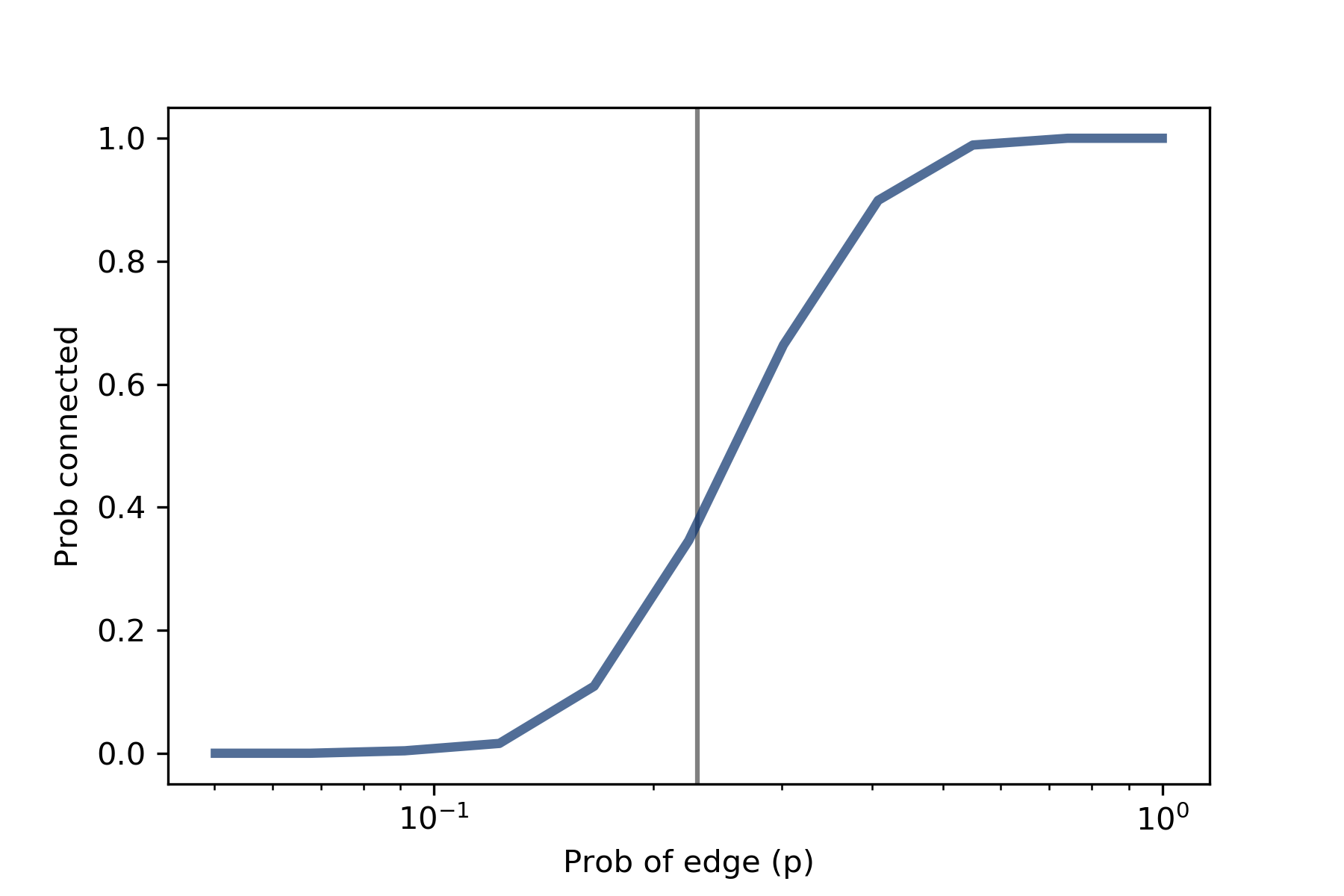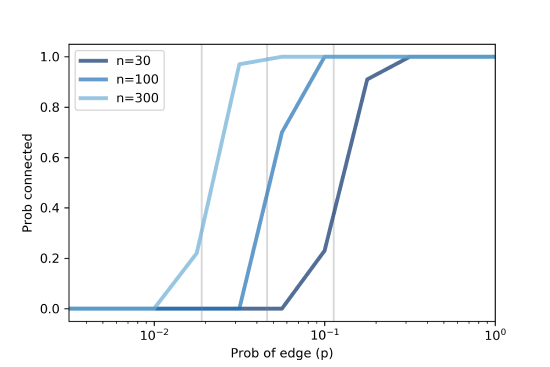2.7: Probability of connectivity
- Page ID
- 46582


For given values of n and p, we would like to know the probability that G(n, p) is connected. We can estimate it by generating a large number of random graphs and counting how many are connected. Here’s how:
def prob_connected(n, p, iters=100):
tf = [is_connected(make_random_graph(n, p))
for i in range(iters)]
return np.mean(bool)
The parameters n and p are passed along to make_random_graph; iters is the number of random graphs we generate.
This function uses a list comprehension; if you are not familiar with this feature, you can read about it at http://thinkcomplex.com/comp.
The result, tf, is a list of boolean values: True for each graph that’s connected and False for each one that’s not.
np.mean is a NumPy function that computes the mean of this list, treating True as 1 and False as 0. The result is the fraction of random graphs that are connected.
>>> prob_connected(10, 0.23, iters=10000) 0.33
I chose 0.23 because it is close to the critical value where the probability of connectivity goes from near 0 to near 1. According to Erdős and Rényi, p* = lnn / n = 0.23.
We can get a clearer view of the transition by estimating the probability of connectivity for a range of values of p:
n = 10
ps = np.logspace(-2.5, 0, 11)
ys = [prob_connected(n, p) for p in ps]
The NumPy function logspace returns an array of 11 values from 10−2.5 to 100 = 1, equally spaced on a logarithmic scale.
For each value of p in the array, we compute the probability that a graph with parameter p is connected and store the results in ys.
Figure \(\PageIndex{1}\) shows the results, with a vertical line at the computed critical value, p* = 0.23. As expected, the transition from 0 to 1 occurs near the critical value.
Figure \(\PageIndex{2}\) shows similar results for larger values of n. As n increases, the critical value gets smaller and the transition gets more abrupt.
These experimental results are consistent with the analytic results Erdős and Rényi presented in their papers.


